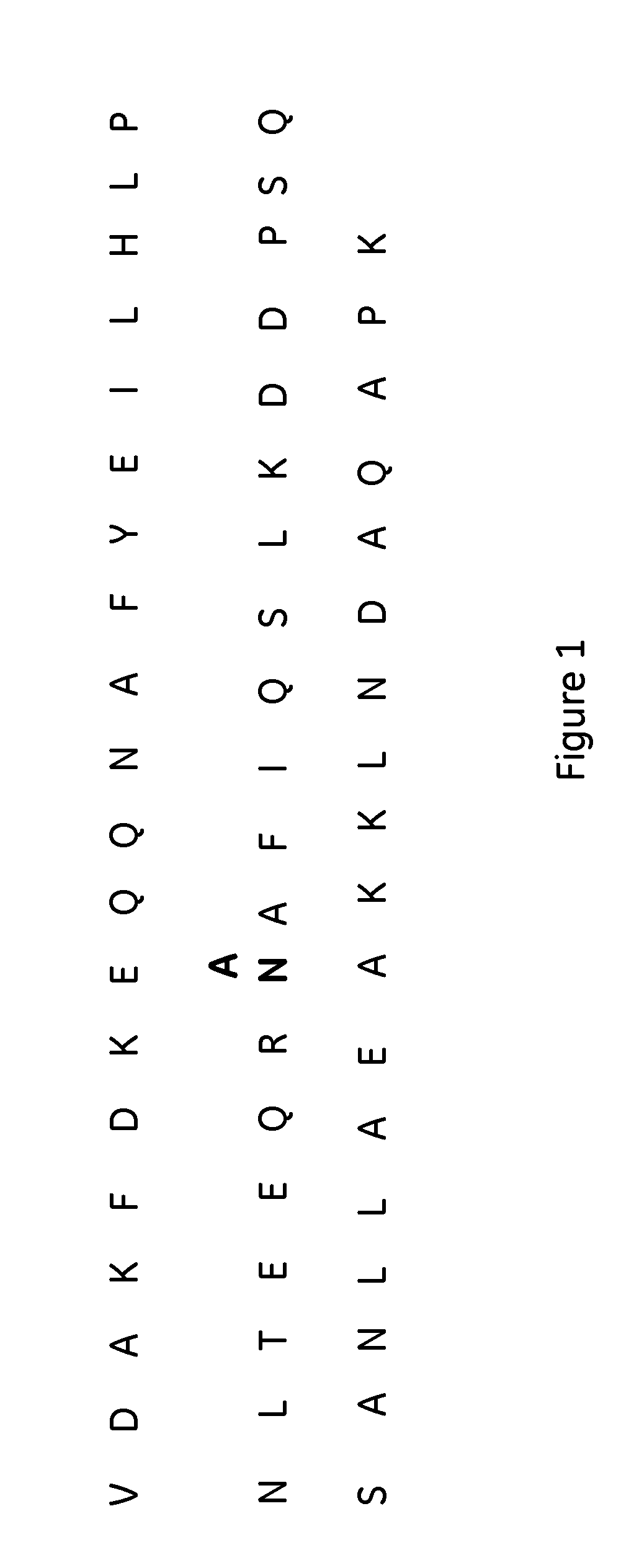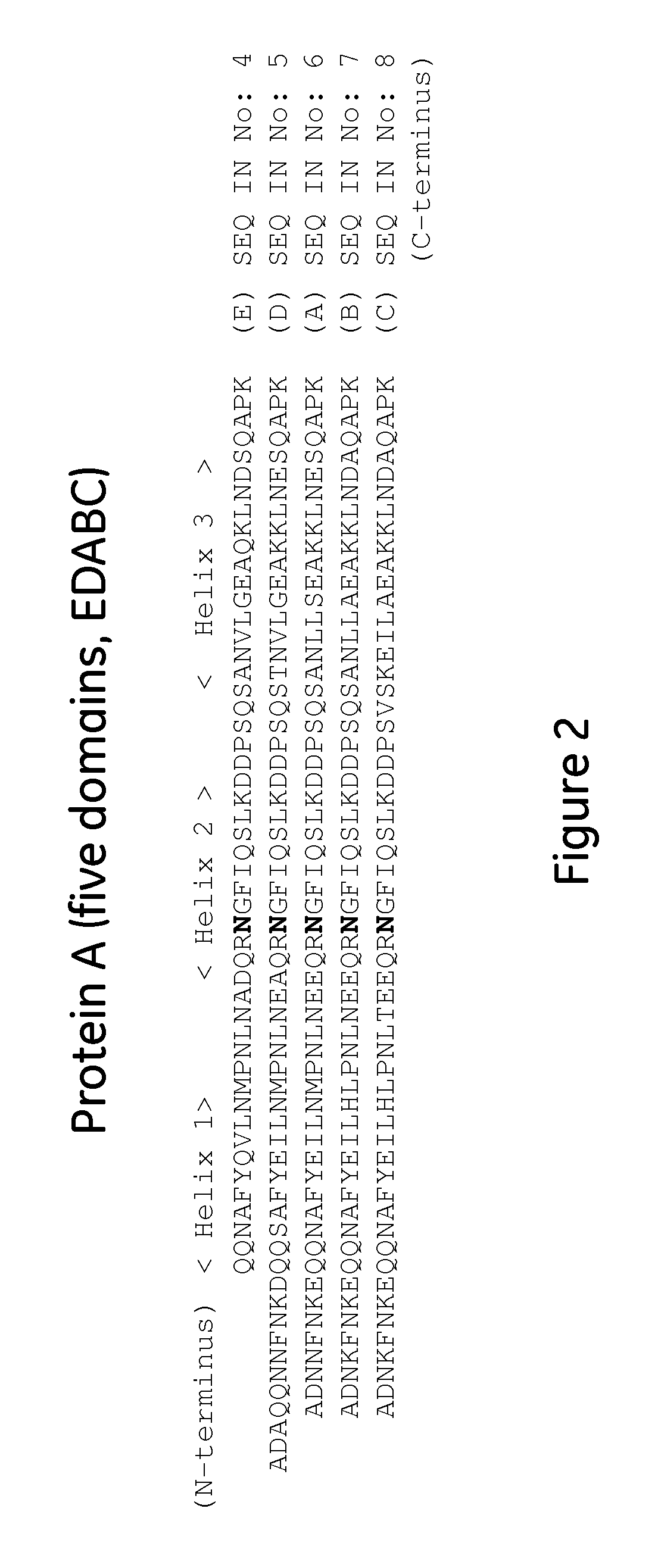Affinity chromatography matrix
a technology of affinity chromatography and matrix, which is applied in the field ofaffinity chromatography, can solve the problems of antibody aggregation or sensitive, decrease capacity, etc., and achieve the effect of cost-effective large-scale operation and increased elution ph
- Summary
- Abstract
- Description
- Claims
- Application Information
AI Technical Summary
Benefits of technology
Problems solved by technology
Method used
Image
Examples
example 1
Prototype
Mutant Z(N28A)2 (SEQ ID NO: 3): ligand dimers containing two copies of protein Z, each containing the N28A substitution (Z(N28A)2), with ligand density of 6.6 mg / ml.
Z2 (similar to SEQ ID NO: 3, expect N28 is not substituted to A): ligand dimer containing two copies of protein Z (Z2), with ligand density of 5.9 mg / ml.
2 ml of resin packed in TRICORN™ 5 100 column.
Protein
Gammanorm 165 mg / ml (Octapharma), diluted to 1 mg / ml in Equilibration buffer.
Equilibration Buffer
APB Phosphate buffer 20 mM+0.15 M NaCl, pH 7.4 (Elsichrom AB)
Adsorption Buffer
APB Phosphate buffer 20 mM+0.15 M NaCl, pH 7.4 (Elsichrom AB).
Elution Buffers
Citrate buffer 0.1 M, pH 6.
Citrate buffer 0.1 M, pH 3.
PUM
| Property | Measurement | Unit |
|---|---|---|
| pH | aaaaa | aaaaa |
| pore size | aaaaa | aaaaa |
| density | aaaaa | aaaaa |
Abstract
Description
Claims
Application Information
 Login to View More
Login to View More - R&D
- Intellectual Property
- Life Sciences
- Materials
- Tech Scout
- Unparalleled Data Quality
- Higher Quality Content
- 60% Fewer Hallucinations
Browse by: Latest US Patents, China's latest patents, Technical Efficacy Thesaurus, Application Domain, Technology Topic, Popular Technical Reports.
© 2025 PatSnap. All rights reserved.Legal|Privacy policy|Modern Slavery Act Transparency Statement|Sitemap|About US| Contact US: help@patsnap.com



